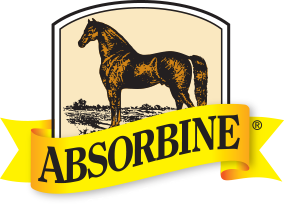 Hoof Nutrition Intelligence is a twice-a-month web segment that is designed to add to the education of footcare professionals when it comes to effectively feeding the hoof. The goal of this web-exclusive feature is to zero in on specific areas of hoof nutrition and avoid broad-based articles that simply look at the overall equine feeding situation.
Hoof Nutrition Intelligence is a twice-a-month web segment that is designed to add to the education of footcare professionals when it comes to effectively feeding the hoof. The goal of this web-exclusive feature is to zero in on specific areas of hoof nutrition and avoid broad-based articles that simply look at the overall equine feeding situation.
Below you will find Part 1 of the latest question and answer installment that you can share with your footcare clients.
Q: If a horse has been rehabilitated from laminitis or other disorders, is there an increased risk for the return of these concerns? What preventative measures can be taken to prevent the return of laminitis, and how effective are they (such as feeding vitamin- or mineral-type supplements)?
By Frankie Bowers, DVM
A: Yes, there is an increased risk as laminitis causes micro thrombosis, which can result in decreased blood flow to the digits in the hoof. The resulting decreased blood flow can sometimes lead to hemorrhage in the surrounding tissue. This ultimately can cause necrosis of the laminar tissue, which allows the digital phalanx to drop away from the hoof wall.
All of these factors make the horse more susceptible to the circumstances that likely triggered the laminitis or other disorder
There are many causes of acute laminitis such as carbohydrate overload, gastrointestinal disease and a retained placenta. The first line of defense for horse owners is to prevent exposure to these factors. In addition, improving the digital blood flow and maintaining adequate blood flow of the laminate tissue can aid in preventing the phalanx bone from dropping through the sole of the foot.
Since the treatment goal should be to provide the laminar tissue with increased blood flow to allow healing to occur, the remaining vascular insufficiencies may be positively affected by feeding vitamin and mineral supplements. These products provide support by increasing blood flow to the laminar tissue, which can ultimately encourage the healing process. The addition of essential amino acids, vitamins, biotin and trace minerals also appear to be beneficial. As always, it is recommended that before providing any supplements, horse owners should consult with their veterinarian.
Veterinarian Frankie Bowers is the business development manager for American Animal Nutrition, a subsidiary of National Enzyme Company.
Hoof Nutrition Intelligence is brought to you by W.F. Young Co. (Absorbine). 
Like many significant achievements, Absorbine® grew out of humble beginnings—and through the tenacity of someone willing to question the status quo. In this case, it was a young woman in late 19th-century Massachusetts: Mary Ida Young. Her husband, Wilbur Fenelon Young, was an enterprising piano deliveryman who relied on the couple’s team of horses to make deliveries throughout the Northeast. Inspired by Mary Ida and Wilbur’s vision, Absorbine® has continued to add innovative products throughout the years — products used every day by horse owners around the world. Which is why, since 1892, we’ve been The Horse World’s Most Trusted Name®.
Click here to read Part 2 of the June 1, 2015 installment: How important is a horse’s overall diet in determining whether a hoof supplement may be needed?
Click here to read more installments of Hoof Nutrition Intelligence.

Post a comment
Report Abusive Comment